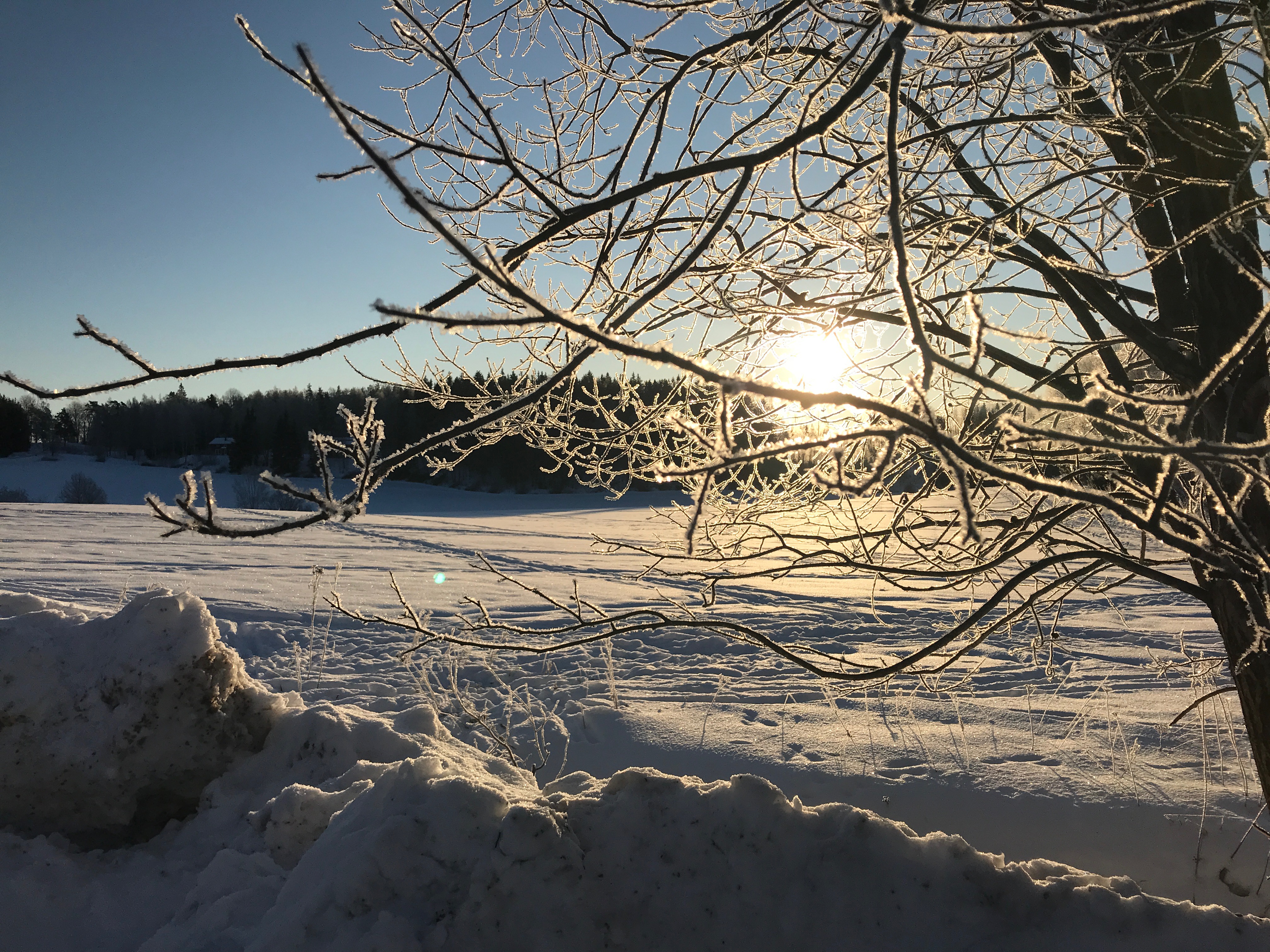The Fiskars River—A Journey in Communication
Gabriel Hartley • 17 February 2021
One of the most stunning aspects of the Fiskars landscape is its perpetual display of the magic of the elemental spirits that make up the material-spiritual continuum of life. Each season provides sight and insight into this aspect of our surroundings that we have learned to take for granted in this age of simplistic science.

In this kind of weather I end up developing a personal relationship with the temperature, as well as with my phone weather app. Keeping track of the weather here in Finland and back home in the cities where my family live, as well as my friends in Australia and Pakistan, gives me a constant sense of the planetary family we are each a part of.
• • •

The mist rising from the river water gives us a chance to see this magical phenomenon arising from the temperature difference between the icy-yet-warmer water and the frigid air. In Maine we called this sea smoke. The river this morning provides a stunning display of the elemental forces at work in the constituion of our world. This mist, for example, gives us a physical view of the ways in which water molecules transport themselves from bodies of water to the air above. We can see the continual shift in stages of matter from crystallized solid (ice) to liquid (water) to gas (mist). We can also see the varying effects of gravity on the distribution and redistribution of these molecules in transition.
A deeper intuitive perspective allows us to see these varying states of elemental matter as arrays of conscious and communicative matter. We are reminded in these moments that humans can tune in to and communicate with these beings as they gather and disperse in these natural processes in the world before us.
• • •

We also get a chance on mornings like this to see the ice forming on the top of the river stream, which you can see above in the morning sun on the water. As we continued walking along the river bank into the village center, we were able to see the ice sheets flow down into larger and larger gatherings, eventually forming a single shelf of ice. Some of the water molecules that do not rise up as steam go through this process of concretisation, merging into ever-changing sheets of ice riding along the top of the flowing water. In cold enough weather, this process takes place despite the abrasive nature of the water’s flowing movement. Varying natural forces appear to compete with one another in these opposing processes of condensation and distribution.
• • •

In this angle of the morning sun, the ice crystals floating in the air become visible, just as the dust particles in a house do as the sun shines in through a window. It was at this moment that I got a clearer sense of intelligence and communicability in nature. I could see each floating, glowing crystal as a being, much like the fairies we see in many paintings devoted to this kind of magic.


Even without the shining sun as a revealing backdrop, we can see this process in the gathering of ice crystals on the branches and bark of the trees, glistening in the morning sunrise. These crystals form a coat of ice on objects in the landscape, a testament to otherwise unseen forces.
• • •

The ice sheets build up and form a skin along the river bank that spreads out farther each hour as the temperatures stay this low. In the distance the morning sun illuminates the Fiskars Clock Tower, the predominant human feature in the town.
• • •

Perhaps the most dynamically dramatic display of these tendencies of elemental forces to reshape themselves in response to their environment is the frozen waterfall at the mill in the center of the Village. All winter long we have been watching this elemental aggregate form and reform itself in accord with the dictates of temperature and churning water force. Added to this magic is that of the local otters, who use this spot (see the indentation in the snow in the foreground where the seedlings poke though) as their sliding ramp into the water. This transformation of liquid motion into solid mass serves as a lesson in the malleable nature of nature itself, of the ways in which the shape of things around us constantly transforms itself according to the shifting contingencies of time.
• • •
This riverbed flow is our pathway each morning as we drop our son off at school and then walk the kilometer or so through the village back to our home. It is our own school, the place of our grown-up schooling, the process of our bodily engagement with the natural intelligences of our world in its ceaseless, constant transformation of self and surroundings.

Leave a Reply